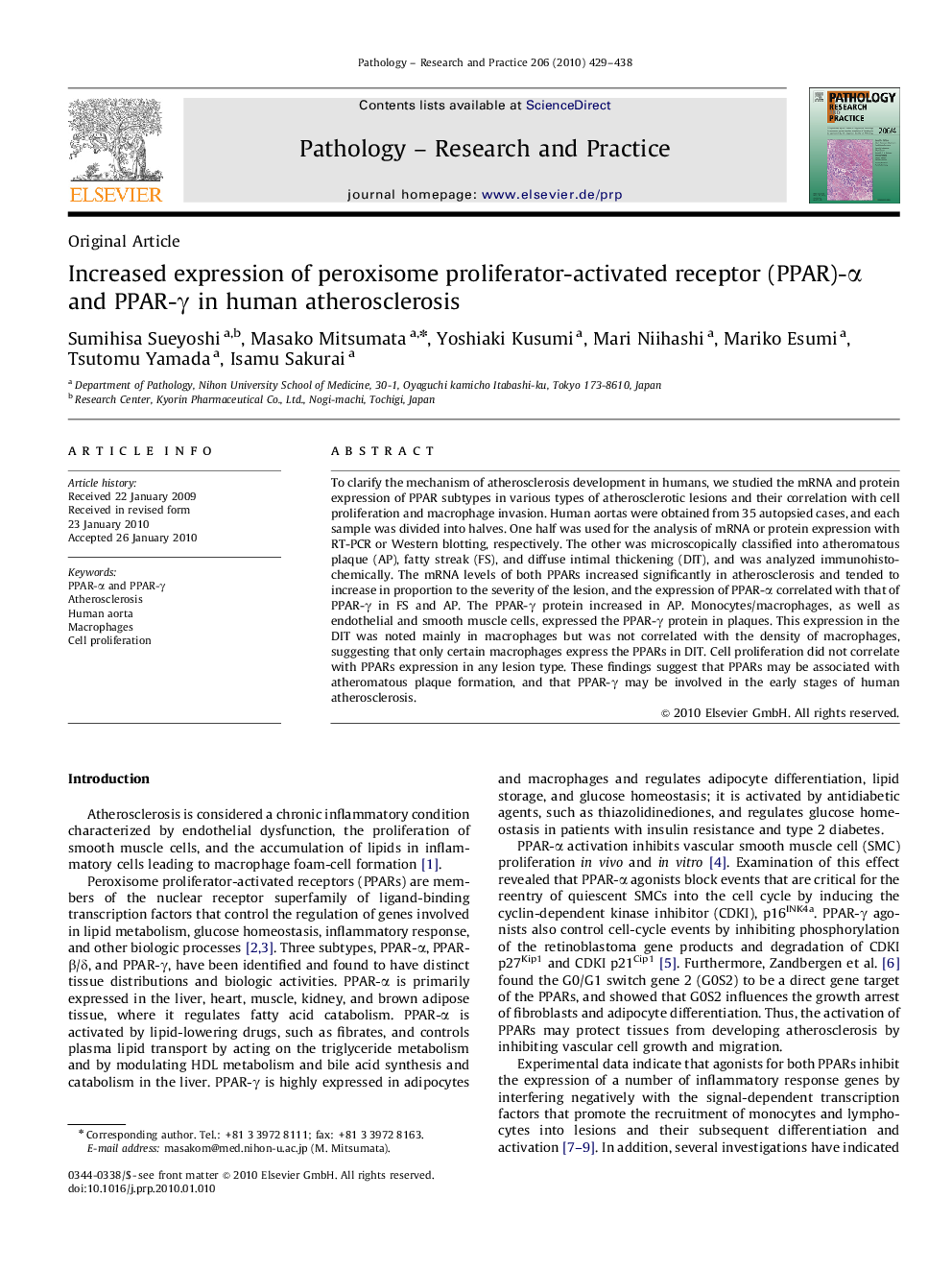| Article ID | Journal | Published Year | Pages | File Type |
|---|---|---|---|---|
| 2155911 | Pathology - Research and Practice | 2010 | 10 Pages |
To clarify the mechanism of atherosclerosis development in humans, we studied the mRNA and protein expression of PPAR subtypes in various types of atherosclerotic lesions and their correlation with cell proliferation and macrophage invasion. Human aortas were obtained from 35 autopsied cases, and each sample was divided into halves. One half was used for the analysis of mRNA or protein expression with RT-PCR or Western blotting, respectively. The other was microscopically classified into atheromatous plaque (AP), fatty streak (FS), and diffuse intimal thickening (DIT), and was analyzed immunohistochemically. The mRNA levels of both PPARs increased significantly in atherosclerosis and tended to increase in proportion to the severity of the lesion, and the expression of PPAR-α correlated with that of PPAR-γ in FS and AP. The PPAR-γ protein increased in AP. Monocytes/macrophages, as well as endothelial and smooth muscle cells, expressed the PPAR-γ protein in plaques. This expression in the DIT was noted mainly in macrophages but was not correlated with the density of macrophages, suggesting that only certain macrophages express the PPARs in DIT. Cell proliferation did not correlate with PPARs expression in any lesion type. These findings suggest that PPARs may be associated with atheromatous plaque formation, and that PPAR-γ may be involved in the early stages of human atherosclerosis.
